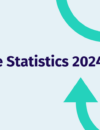
With life unlikely to go back to normal for some time yet, businesses should be finding ways to make the return to work as safe, and inclusive, as possible.
The jubilant atmosphere of the revellers who flocked to pubs and bars on ‘Super Saturday’ (the tentative reopening of the hospitality sector in England following the Coronavirus lockdown) showed just how much we can’t wait for things to get back to normal.
Unfortunately, we might have to wait for some while longer.
As scientists around the world work tirelessly to find a cure for COVID-19, new developments continue to put a dampener on expectations. The latest consensus is that a one-time cure-all vaccine will not be possible. There is still so much that we do not know about the virus, with new research rapidly changing our understanding of how it works and how it spreads.
The UK government itself has stated: “While we hope for a breakthrough, hope is not a plan. Our plan must anticipate a situation where we are all in this together, for the long haul.”
As we transition into this new phase, there’s a big question on the minds of the millions of people who have been furloughed or working from home since the lockdown began: how will we go back to work?
Faced with the prospect of “the long haul”, and with furlough payments due to end in October, businesses are now exploring the most viable options for bringing people back to work while also keeping them safe from Coronavirus.
Offices, Re-imagined
Public-facing businesses–such as pubs, restaurants, shops, and hairdressers–have responded to the pandemic by introducing robust hygiene measures to the workplace. Socially distanced tables, mandatory face masks, and sophisticated track and trace systems are just some of the tools being used to mitigate the spread of the virus in places with a very high footfall.
For professional workers, the challenges are different. Specifically, concerns have arisen about spending long hours in close quarters with colleagues, in open plan offices. To quote the government of the Netherlands, companies must find ways to adapt to the “1.5 metre society”.
In the short term, businesses are reassuring staff by installing protective barriers. These can be both physical– like sneeze guards and divider screens–and visual, e.g. socially distanced floorpans and walking routes.
In the long term, many are questioning whether a central office is the wisest, most efficient use of workspace. There is growing interest in the “distributed office”: a series of satellite offices which lets workers travel to a workspace closer to their home, avoiding the risk of overcrowded public transport at rush hour, let alone a crowded head office.
Clearly, the biggest change in office design is new emphasis on hygiene. Many experts believe that our offices will come to resemble hospitals: health screening at reception, regular hand washing stations, automatic doors, and the widespread use of stone and laminate surfaces for easy cleaning.
In the weeks leading up to lockdown, many of us had already gotten used to sanitising our hands as we moved around the building. What started out feeling like an odd ritual may well become a new habit.
Making Work Accessible For Everyone
For able-bodied people, this may well be the first time they have been forced to think about how they move through the world. For those living with a disability, this sense of anxiety and restriction is sadly nothing new.
According to UN studies, 1 in 10 of us have some form of disability or long-term health condition. In the UK, it is 1 in 5. And yet, far too many of our workspaces are still woefully ill-equipped to accommodate differently-abled people. In many cases, this goes even further than a lack of access ramps and elevators.
A number of activists have been working tirelessly to raise awareness of neurodiversity in the workplace, including Oli Monks, who we profiled two years ago. Oli is the founder of Place with Purpose, a charity focused on developing and campaigning for neurodivergent friendly workspaces and employment practices. He is keen to stress that the current moment should be an opportunity not just to retrofit but to transform our offices for total accessibility. Open-plan offices have long been favoured by workplace designers, but can be distressing environments for people with conditions like autism. Now, as op-ed after op-ed is forecasting the death of the open-plan office in a post-Covid world, perhaps we can work together to find a design solution that meets everyone’s needs.
While the government has pledged to get “1 million more people with disabilities into employment over the next ten years”, the employment gap between people with disabilities and people without disabilities still stands at almost 30 percent. With businesses forced to make further cutbacks and freeze new hires to cope with the economic impacts of the pandemic, this gap might grow even wider. Even prior to the pandemic, surveys found that compared to their non-disabled counterparts, people with disabilities are 82 percent more likely to experience involuntary job loss during a downturn.
With no end to Coronavirus in sight, it is absolutely vital that both the government and businesses work to find long-term solutions to the present crisis. Too often, people with disabilities are shut out of public life. We cannot allow Coronavirus to make the situation even worse.
Staying In
“Work from home if you can.”
When the government first announced the shift to remote working at the start of lockdown, the mood was apprehensive. The prospect of endless distractions, spotty Wi-Fi, and overall cabin fever left many wondering whether they could survive working from home.
Here we are months later, and for now, the guidance from the government hasn’t changed. There are no immediate plans to reopen offices for non-essential workers. But having settled quite smoothly into a new routine, many leading companies are now asking whether they need to reopen at all. Last month, Twitter announced its plan to allow staff to work from home indefinitely, citing the fact that productivity levels had remained consistent.
In actual fact, productivity has seen a spike. Compared to office-based staff, remote employees work three weeks more per year–routinely working harder and later while enjoying the independence and flexibility that home working grants them.
For people with disabilities, the shift towards working from home could make all the difference in the world. As remote working becomes the new normal, people with disabilities should hopefully face fewer of the institutional disadvantages and prejudices that previously arose when forced to “physically” go to work.
Homeworking has also been good for parents, who have been freed of the logistical headache of juggling childcare and professional demands. For those looking to negotiate for more flexible working arrangements, they now have ample evidence that that the quality of their work would not suffer.
While many bosses were once sceptical of allowing employees to work from home, surveys have found that almost half of companies forced to adopt working from home practices believe that remote working is having a positive impact on output. Studies have shown that even working from home only one day a week can improve productivity by over 10 percent.
The lockdown has proved to be a working from home trial period for business owners. And with many now open to the idea, it is likely to become a long term trend. While some are worried about the impact that permanent remote working will have on company culture, it is clear that we are now living in a world in which many of our conventional habits have been upended.
Even in the midst of so much upheaval, there are still silver linings. Not just for our physical health, but our mental health as well. A shift to total or even partial homeworking would allow people to commute infrequently, saving them countless hours and associated stress. With so much uncertainty, a little more peace and quiet could be just what we need.
Above all, it is important that companies understand the responsibility they have, and meet the challenges of a pandemic head on, with creativity and open-mindedness. The truth is that none of us know what is going to happen in the coming months. But rather than rushing to get “back to normal”, we should work collaboratively to establish a new “normal” that works for everyone.
Information and further resources regarding your rights and the ways that your employer should be safeguarding you can be found by following the link below:
https://www.ucu.org.uk/media/10838/Coronavirus-and-disability/pdf/ucu_main_v41.pdf





